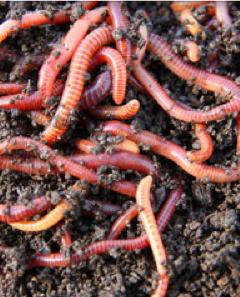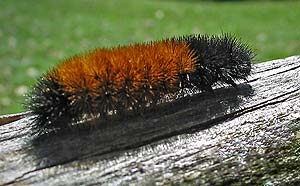Posted on 17 January 2012 by urbangardencasual.com
 By Mindy McIntosh-Shetter
By Mindy McIntosh-Shetter
As an avid gardener, I am always looking for ways to use my abundant supply of organic material.
My compost bins are full and it is against my nature to throw away such wonderful material that could be turned into “Black Gold.”
So this year I decided to do something about it and that was to try my hand at worm farming or vermicomposting.
I did not jump into this with a light heart. I knew that my worms would have to be taken care of just like my rabbit, livestock or any type of pet. So knowing all the facts and responsibilities, I jumped in, hand first into the project.
The first challenge I had was find a container that I already had. I am trying to reduce my consumerism and in doing so wanted to reuse or repurpose something. As I searched my supplies, I discovered Read the rest of this entry »
Posted on 11 January 2012 by urbangardencasual.com
 By Mindy McIntosh-Shetter
By Mindy McIntosh-Shetter
Being raised in the country and a natural forager, I love dandelions.
Every spring I love to see the stems rise above the lawn and produce bright yellow blooms.
This simple sign is the one I use to welcome spring.
Every part of the dandelion is useful.
The leaves harvested in the early spring make a delightful salad or sautéed with onions and garlic make a perfect green side dish. Leave harvest later in the season can be dried and used for tea. Blooms are eaten when they are green.
When they open up they are picked and used for jelly and tea. Dandelion wine is a wonderful country drink that is made from the blooms while the sap from the stem and roots is used as a wart treatment. A coffee substitute can also be made from the root but only harvest root after a hard frost.
Before jumping into Read the rest of this entry »
Posted on 07 January 2012 by urbangardencasual.com
 By Mindy McIntosh-Shetter
By Mindy McIntosh-Shetter
Growing up as a child, my dad and I planted hundreds of trees.
Some of these were for pure beauty and some shared their beauty outside and in the kitchen.
One of my favorite trees that fell into this culinary category was the chestnut tree.
American Chestnut trees have had a torrid past with chestnut blight.
This fungus was brought into New York by way of some Asian nursery stock in the 1900. This blight spread everywhere by wind, rain, birds and other animals. Once it was placed on the bark of a tree, it made its way into the tree through cracks in the bark.
After it entered the bark, it would cause Read the rest of this entry »
Posted on 03 January 2012 by urbangardencasual.com
 By Mindy McIntosh-Shetter
By Mindy McIntosh-Shetter
I have always looked toward nature as my predictor of the weather.
Learning the weather patterns of ones local area is very beneficial to gardeners.
It can help the gardener decide when to put the cold or cool season crops in and can provide some guidance as to fall and winter crops.
The key to this technique is knowing what to look for, when to look for it, and understanding what you see.
WOOLY WORM
Wooly worms are famous as bad winter predictors. It is believed that if the caterpillar is solid black, the whole winter will be abnormally bad. On the other end of the spectrum, it is believed that if the caterpillar is brown or light brown this is an indication of a mild winter. Wooly worms have 13 sections and each section represents one week of the winter season. If the wooly worm is in bands of black and brown, this is an indication of a winter that is going to have a lot of changes.
SQUIRRELS
In the fall, squirrels are busy collecting food for the winter. Some believe that Read the rest of this entry »
Posted on 31 December 2011 by urbangardencasual.com
 By Mindy McIntosh-Shetter
By Mindy McIntosh-Shetter
Growing up as a child, cauliflower was only consumed as a treat.
It seemed to me that this vegetable was like royalty.
The white head was like a crown of delightfulness but when I moved out on my own I learned the truth about cauliflower.
Cauliflower can be an easy vegetable to grow with or without land.
he keys to remember when growing this vegetable are numerous. One, this vegetable is a cole or cool season crop and does not do well in hot weather. Two, this vegetable likes a firm, fertile soil that has a pH of 6.5 to 7.0. Three, avoid disturbing the firm soil whenever possible and create firm soil around the plant whenever possible.
Cauliflower plants can be Read the rest of this entry »
 By Mindy McIntosh-Shetter
By Mindy McIntosh-Shetter By Mindy McIntosh-Shetter
By Mindy McIntosh-Shetter By Mindy McIntosh-Shetter
By Mindy McIntosh-Shetter By Mindy McIntosh-Shetter
By Mindy McIntosh-Shetter By Mindy McIntosh-Shetter
By Mindy McIntosh-Shetter












